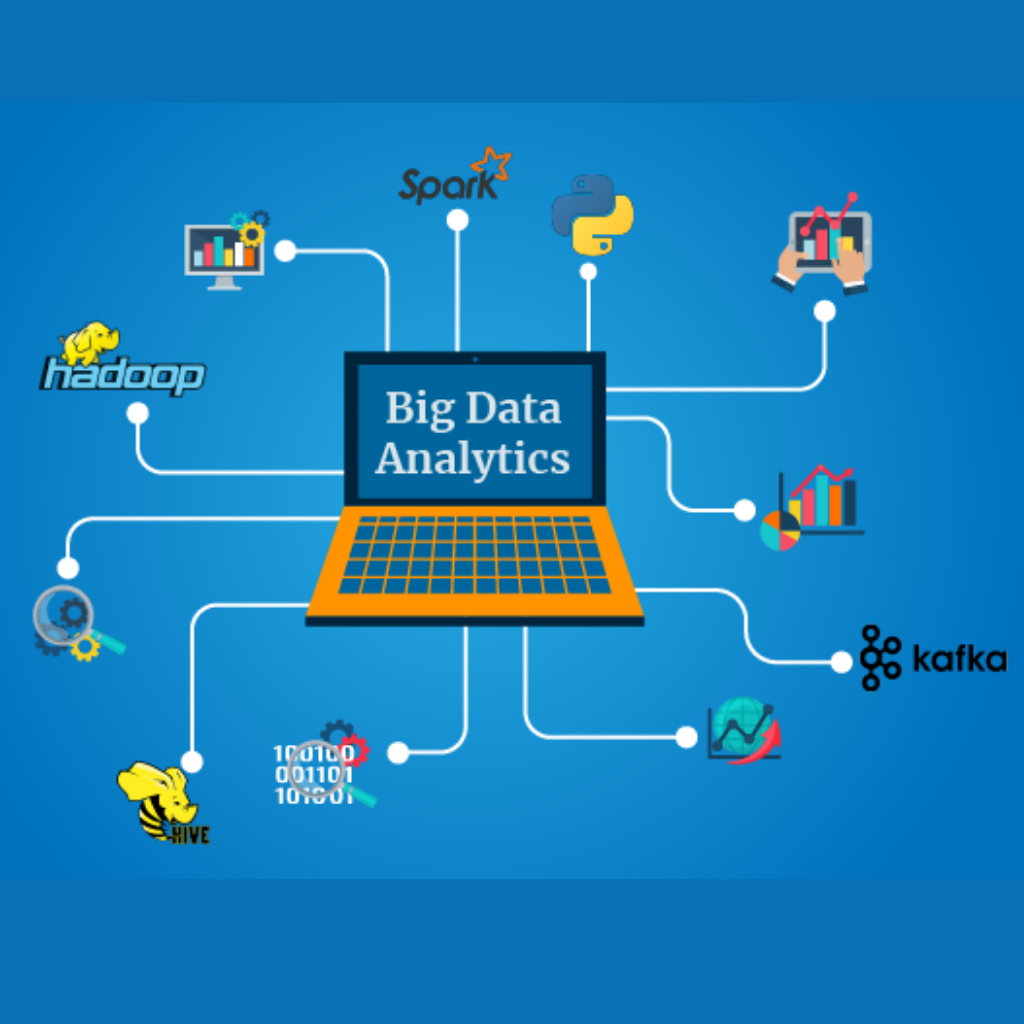BIG DATA ANALYTICS
BIG DATA ANALYTICS TRAINING
This Big Data Analytics course teaches you the fundamentals of the Hadoop platform, Big Data technologies, and approaches. A Big Data certification will set you up for success as a Big Data Developer. This Big Data and Hadoop training will help you learn how the various Hadoop ecosystem components fit into the Big Data processing lifecycle. Explore Spark applications, parallel processing, and functional programming with this Big Data and Hadoop online class. Join V cube for Big Data Analytics training in Kphb.
Duration : 45 Days

Course's Key Highlights
![]() 100+ hours of learning
100+ hours of learning![]() Real-time industry professionals curate the course.
Real-time industry professionals curate the course.
![]() Internships and live projects
Internships and live projects
![]() A cutting-edge training facility
A cutting-edge training facility
![]() Dedicated staff of placement experts
Dedicated staff of placement experts
![]() Placement is guaranteed 100 percent Assistance
Placement is guaranteed 100 percent Assistance
![]() 28+ Skills That Are Useful in the Workplace
28+ Skills That Are Useful in the Workplace
![]() Trainers with a minimum of 12 years of experience
Trainers with a minimum of 12 years of experience
![]() Videos and back-up classes
Videos and back-up classes
![]() Subject Matter Experts Deliver Guest Lectures
Subject Matter Experts Deliver Guest Lectures
Description of Big Data
Big data analytics are information assets with great volume, high velocity, or high diversity that necessitate novel types of processing to enable improved decision making, insight finding, and process optimization.” Let us delve deeper and break this down into simpler terms. The term “big data” is self-explanatory: it refers to a collection of massive data sets that traditional computing techniques cannot handle. The word encompasses not only the data but also the numerous frameworks, tools, and methodologies involved. Because of technical improvements and the advent of new channels of communication, such as social networking, and stronger gadgets, industry participants face a problem. The entire globe had only five billion gigabytes of data from the beginning of time until 2003. In 2011, the same amount of data was created in only two days. This volume was generated every ten minutes by 2013. As a result, it is not unexpected that 90 percent of all data in the globe has been generated in the last few years. All of this data is useful when analyzed, but it was mostly ignored before the concept of big data emerged. Consider professional certification training in Big Data or related technologies, such as Impala, Cassandra, Spark, and Scala, to learn more about Big Data and get your foot in the Data Science industry door.
What is Big Data used for?
Big Data is an open-source software environment for data storage and processing that works on commodity hardware clusters. It has a vast storage capacity, a large processing capacity, and the ability to run practically endless concurrent tasks or jobs. This course is designed to prepare you to become a certified big data practitioner by providing thorough practical training in the Big Data Ecosystem.
History of Big Data
The first evidence of big data can be found in 1663 when John Grant dealt with massive volumes of data while researching the bubonic plague, which was ravaging Europe at the time. Grant was the first to employ statistical data analysis. Later, in the early 1800s, the study of statistics broadened to include data collection and analysis. In 1880, the world became aware of the problem of data overload. The US Census Bureau announced that it would take eight years to gather and process the data acquired during that year’s census program. In 1881, a Bureau employee called Herman Hollerith invented the Hollerith Tabulating Machine, which decreased computation work.
Types of Big Data :
1. Structured data: Structured data is data that can be stored, accessed, and processed in a fixed format. Because this data is in a similar format, firms may make the most of it by undertaking analysis. A variety of advanced technologies are also being developed to extract data-driven judgments from structured data. However, the world is approaching a point where the generation of structured data is out of control, as it has already surpassed the zettabyte level.
2. Unstructured data: Unstructured data is any data that has an undetermined shape or organization. Processing unstructured data and analyzing it to acquire data-driven responses is a difficult undertaking because they are from diverse categories, and combining them will only make matters worse. Unstructured data is a heterogeneous data source that contains a mix of plain text files, photos, movies, and so on.
3. Semi-structured data: Semi-structured data contains both structured and unstructured information. Semi-structured data appears to be structured in form, but it is not defined with table definition in relational DBMS. Semi-structured data is common in web applications. It contains unstructured data such as log files, transaction history files, and so on. OLTP systems are designed to operate with structured data, which is stored in relationships.
Upskill & Reskill For Your Future With Our Software Courses
Best Software Training Institute In Hyderabad

Quick Links
- Home
- About Us
- Courses
- Contact Us
Other Pages
Contact Info
- 2nd Floor Above Raymond’s Clothing Store KPHB, Phase-1, Kukatpally, Hyderabad
- +91 7675070124, +91 9059456742
- contact@vcubegroup.com
